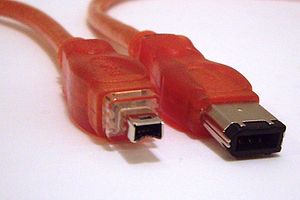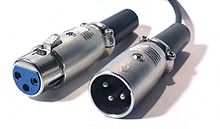Tune Up: Buying Cables
posted in: Features • Reviews & Playlists
 One of the most complicated and expensive aspects of making new electronic purchases is, unfortunately, an all-too-common after thought. Buying the right cables, converters and connectors is a daunting task, and many consumers/artists make mistakes by not researching their options beforehand.
One of the most complicated and expensive aspects of making new electronic purchases is, unfortunately, an all-too-common after thought. Buying the right cables, converters and connectors is a daunting task, and many consumers/artists make mistakes by not researching their options beforehand.
This week, I’m going to spend some time telling you about cables and some great brands to go with. For our purposes here, I’m going to divide cables into three categories.
Entertainment:

RCA Connectors (Red/White- Audio, Yellow- Video)
This type of cable includes the RCA/phono cables for audio, as well as video cables (like component/HDMI video cables). These are your standard connectors and quite often they come with your electronics. However, there are rare occasions where you’ll need to go out and buy some. When making purchases, I’d like to recommend a few things.

HDMI Connector
While there are some converters you will probably need for sound (i.e. stereo RCA cables combined into a single 3.5 mm or ¼’ out), most often, you need to go out and buy better video cables. In the case of entertainment systems and TV’s, we’ve seen an absolute overhaul in the industry. Not only are HD TV’s now very affordable, they’re about all you can find in electronics stores. I could easily go on and on talking about the pros and cons between HDMI and component cables, but I’ll just give you some quick information. The main difference is that HDMI cables transmit digital signals, while component cables transmit analog signals. Both can each yield a high definition result, however. While HDMI cables seem to be a wiser choice because they do carry sound with them (a plus for simple plug and use applications), most component cables have the RCA audio cables attached or included. Additionally,both types of cable support up to1080p. Keep in mind that some lower end HD TV’s lack a little in their HDMI inputs, which would cause a lower quality signal anyway. So, the bottom line, try plugging in both and see which looks better.
Computer/Digital Purposes:

DVI Connector
There are a few basic cables to consider here. If you’d like to use a monitor, you’re going to need either a DVI or a VGA cable in most cases. While these are different cables, for the purposes of this article, they will serve the same function. When editing audio or doing any sort of online work for that matter, I can’t stress enough how important monitor space is. Therefore, I would definitely recommend purchasing a monitor to go with your laptop (or a second monitor for a duel desktop setup). For this, you’ll need one of these visual cables. Make sure you have the right converter for your computer (most laptops have smaller connectors that you would need to convert down).

Firewire 4-pin/6-pin Connectors
Now, there’s the debate of USB vs. IEEE 1394 (firewire). While these have many applications, I’ll talk about their benefits for audio use. As a general rule, firewire tends to transfer more data at a faster rate than USB. While USB does advertise a faster transfer rate, most tests indicate that firewire is a faster connection. This is particularly true for audio/recording interfaces. While, the interface will generally dictate whether you have to use firewire or USB, when shopping, you can keep this connection in mind. USB interfaces are more affordable, but tests indicate that with more simultaneous tracks being recorded, firewire performs better with higher quality. Please note that an audio/recording interface with less inputs (say 2), will perform similarly with USB and firewire.
Pro Audio/Live Sound

XLR Connectors
Finally, the third category I’ll focus on is ¼’ line cables and patch cables (used for anything from speakers to line-in recording to guitar cables) as well as XLR cables. In general, the needs and uses for these cables are pretty straight-forward. For guitars, you typically need a standard patch cable (often called a TS cable). For line uses and connecting speakers, you’re looking at a TRS cable which delivers a balanced stereo signal. A signal is balanced when the cable delivers two separate signals (usually positive and negative) and a grounded signal. The balanced receivers will read noise on each connector and cancel it out between the two, thus leaving a balanced signal. XLR cables that connect microphones and speakers also deliver a balanced signal. Therefore, for mics or line-in uses, you’ll want a balanced cable for the balanced inputs, creating a signal that is clean and maximized. For a situation like patching guitar effects together, it’s alright to go with a TS/patch cable.
What to do:
Now that you know some typical cables you need (or at least know a little more about them), it’s time to make that purchase. While there are no standards here, I have a couple of recommendations. For pro audio cables, I would recommend Monster Cables. These are generally very rugged and well-constructed. They also offer a lifetime replacement policy where all you need to do is bring a broken cable into a retailer and they’ll exchange it. It’s your live show or your studio time, so you want a reliable cable. If you’re looking to save a very significant amount of money, head over to Monoprice. These guys not only make their own cables and guarantee them for life, they also cut all the middle man costs. This leaves you with a fraction of the price at a standard retail store.
So, keep this all in mind the next time you buy a new electronic device. After all, you’ve spent a lot on the device and it won’t work without the right cables. To put it simply, use the same research and selectivity you used when buying the device when you’re buying its cables.
